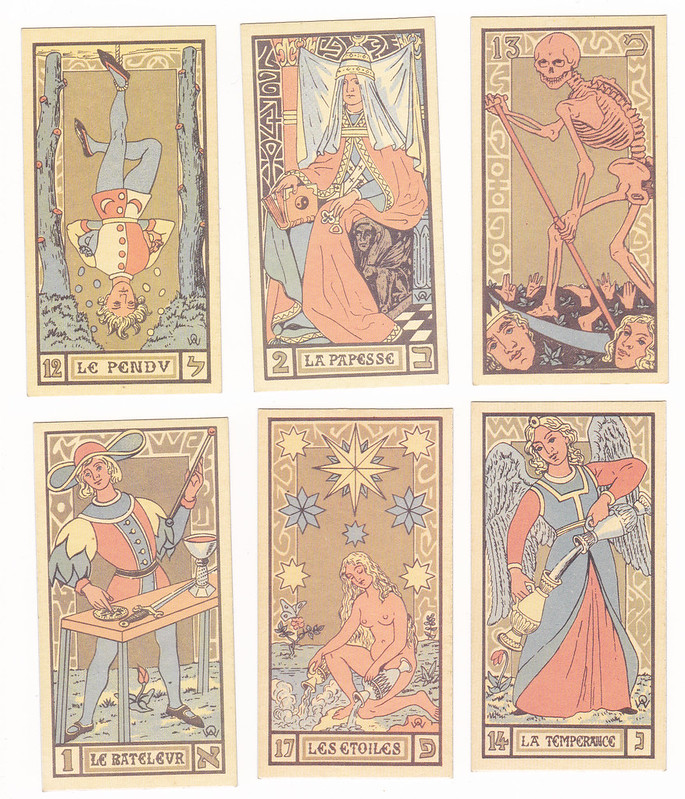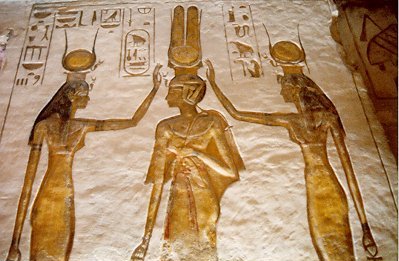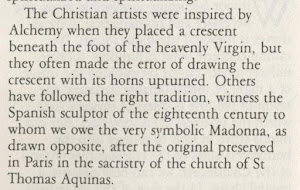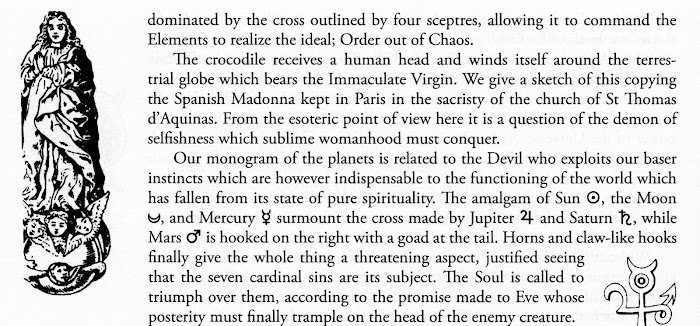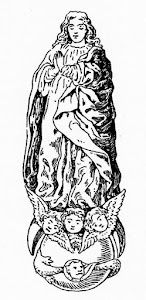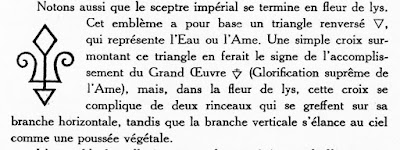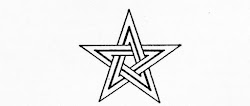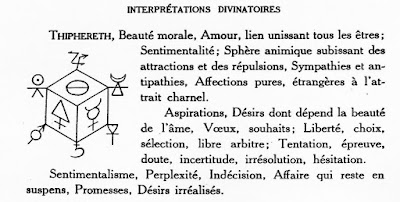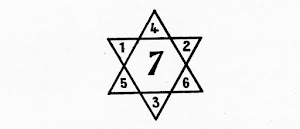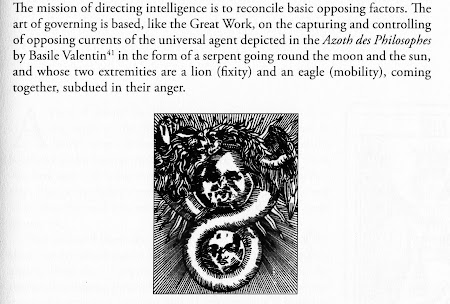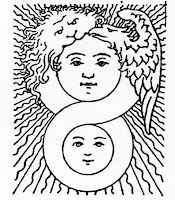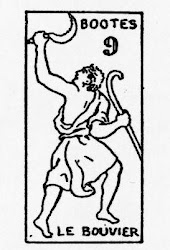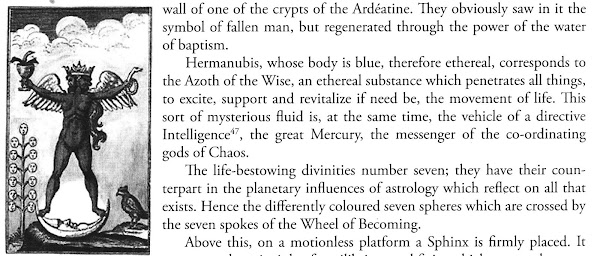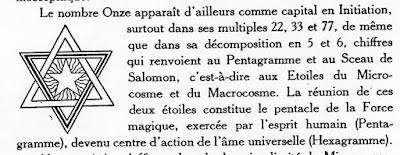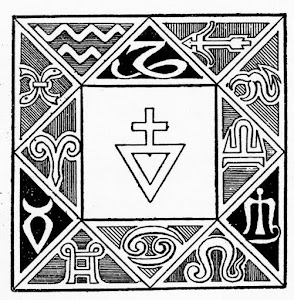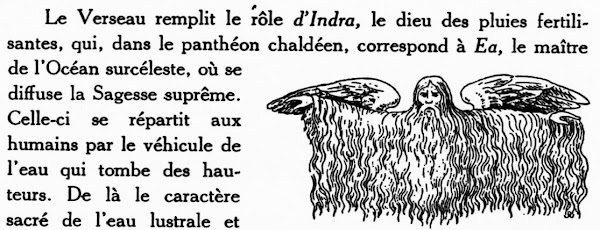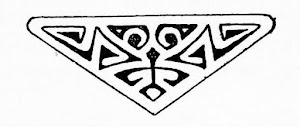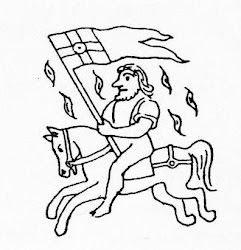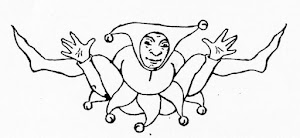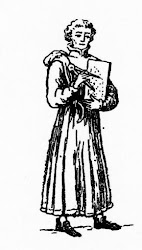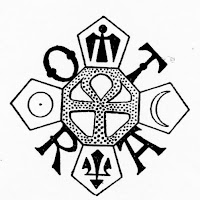adding 1980 image of first quote
Thanks, Philippe, on the Death card. I was looking down below, where all the other numbers were. For me it just blended in with the border designs. Your cards seem a bit faded; I can barely make out the change in color on the Hanged Man's poles..
And Abrac, yes, it's high time you read the book! If you want to discuss it, well, here we are. I am not really giving an analysis, but trying to create something of a level playing field so that it doesn't matter which edition of the English you have. and so you don't need to have the original French edition, as opposed to the later French reprints (and you only need them if there is something strange in the English). But between English editions, the task is considerably easier if you have the 1985, because it follows Wirth more closely in its illustrations. It's the one with the text in two columns and an index.
I can't even imagine what "effrey" would be a typo for! Maybe it's just very archaic.
Now I will go through the cards one by one, stopping only to note the discrepancies between the images inserted into the 1927 text as opposed to those of the other editions.
For the Popess, all the post-1927 editions omit the drawing at the end of the section, which Wirth says in the Appendix (p. 220 of the 2012, p. 212 of 1985) is Isis. Clearly we are to think of this card as Isis (as he later says explicitly at the beginning of Chapter 10).
Wirth is not that bad an Egyptologist. In Egypt statues of seated Isis were frequently of black stone; and her gesture here resembles that of blessing in portrayal’s of her with the queen and Hathor (the oneon the left, from
http://www.grisel.net/abu_simbel.htm)
For the Empress, there is something exceedingly odd. The text of the 1985, which faithfully follows the 1927 original, says at the bottom of its p. 72:
In case the image disappears some day, I have typed it out:
The Christian artists were inspired by Alchemy when they placed a crescent beneath the foot of the heavenly Virgin, but they often made the error of drawing the crescent with its horns upturned. Others have followed the right tradition, witness the Spanish sculptor of the eighteenth century to whom we owe the very symbolic Madonna, as drawn opposite, after the original preserved in Paris in the sacristry of the church of St. Thomas.
In fact there is nothing on the opposite page except a little text at the top and a big blank space (
http://2.bp.blogspot.com/-IdbjooypH...IBs/HXWmVIpojl0/s1600/BookScanCenter_12_3.jpg). It is the same in the 2014 French edition. The only way we might get an inkling of what image he means is that in the Appendix he says he is giving us a sketch "copying the Spanish Madonna kept in Paris in the sacristy of the church of St. Thomas d'Aquinas" (p. 204, corresponding to 212 of the 2012, which I give below). He must mean the image on the preceding page (of the 1985). But what he says about it is something quite different.
The crocodile receives a human head and winds itself around the terrestrial globe which bears the Immaculate Virgin.... From the esoteric point of view here it is question of the demon of selfishness which sublime womanhood must conquer.
In the image, I see no crocodile with a human head, but probably he is speaking figuratively; there is a human head with what appears to be the body of a snake coming out of it, or maybe going around it, or binding him. And if there are moon-horns, the left one has been somehow cut off by the printer.
What the 2012 does is even stranger. In its section on the Empress, we see the following (p. 68):
Notice the text that accompanies the image. Unlike the 1985 translation (which I put as an image and a quote just below the picture of Isis and Hathor), this one says the image is a 16th century German engraving (the last sentence of the paragraph is, "Others have followed the correct tradition, as shown in the sixteenth century German engraving at left>"! And I expect that is what is being shown. It does not appear elsewhere in the book. It appears to be a Madonna, perhaps holding the dead Christ against her, or perhaps it is the Christ Child. I can’t find it on Google. However she does appear to be standing on a crescent moon, horns downward.
The original text clears up the mystery. The end drawing, opposite the text in question, is indeed the same sketch of the 18th century sculpture that appears in the Appendix. However the original give us the full sketch, with both horns visible, pointing downward.
Incidentally, if you were wondering about what “sublime Womanhood” was in French, it is “Féminité sublimée", sublimated Femininity. That means either “Femininity made sublime” or “sublimated Femininity” in an alchemical sense, i.e. turned into a gaseous state. Perhaps they are the same thing, womanhood purified of the dross it picked up eating the Forbidden Fruit. As he says, the sign for Mercury turned upside down is the sign for Venus with a crescent moon below--thus Venus in the heavens..
For 4, the Emperor, all post-1916 editions omit the end drawing, which is of a phoenix in the alchemical symbol for sulfur: a flammable bird in a flammable substance. In the Appendix, this image occurs on p. 215 of the 2012 (very small), p. 207 of the 1985 and p. of the 2014 French (both better).
They also omit another symbol that Wirth created, I think he says it is a stylizatin of the fleur-de-lys that is on the tip of the Emperor's scepter. I cannot find this image in the Appendix.
For 5, the Pope, they all again omit the end drawing, of a five pointed star. This is what makes the five pointed star in the series at the beginning a symbol of the Pope card. But there are plenty of other five-pointed stars in that section; this one does not appear in the Appendix, so I give it below.
For 6 the Lover, the 2012 omits the drawing of a cube near the end with various alchemical symbols on it. The cube of course is six sided. It also appears in the Appendix, in all the editions (p. 215 of the 2012, p. 207 of the 1985).
For 7 the Chariot, they all omit, everywhere, the end drawing of a six-pointed star with a 7 in it.
Also, they all try to reproduce an actual alchemical engraving, both here and in the Appendix, instead of using Wirth’s drawing. Below is the 2012, followed by Wirth’s drawing in the 1927.
For 9, the Hermit, they all omit With’s end drawing, which is of his “Bootes” astronomical card, formerly called “Le Bouvier,” “The Herdsman.”
For 10, the Wheel of Fortune, the 2012 omits all three of Wirth’s drawings and instead substitute two emblems of the editor’s choosing.
The first, above, I recognize as being from the
Rosarium Philosophorum; it is what the accompanying verses say is the Empress, although it in fact has both a male and a female head. But like the Wheel of Fortune it is the tenth emblem in its series. Notice that the horns of the moon point up!
The other is God the Father above the conventional way in which Ezekiel’s wheel was represented, as two interlocking wheels along with, on the left, the four figures of the tetramorph, which Ezekiel reported to be present. It looks like something Wirth would draw, but I cannot find it anywhere in the original. Ezekiel’s wheel is what the occultists associated to the tarot Wheel of Fortune, an association that has no historical basis in relation to the medieval image used by that card.
What Wirth in fact has on these pages is a different set of images, although also on the theme of the tetramorph. One, missing only from the 2012, is the tetramorph inside an ouroborus or tail-eating snake. Another image, missing in this place from all post-1927 editions, is the tetramorph surrounding a circle surrounding another circle surrounding two triangles surrounding a square. Both are in the Appendix (pp. 210-11 of the 2012, p. 202 of the 1985) but the latter is too small there .
The “man” is an upside down angel who seems to be clutching to a parrot. Perhaps I am missing something.
Another missing image in this section, only from the 2012, is a dolphin on a trident, one not seen elsewhere in the book. It is apparently an image of Mercury/Quicksilver, as it is in the same place as the 2012’s Empress.
I will take a break here, halfway through.


